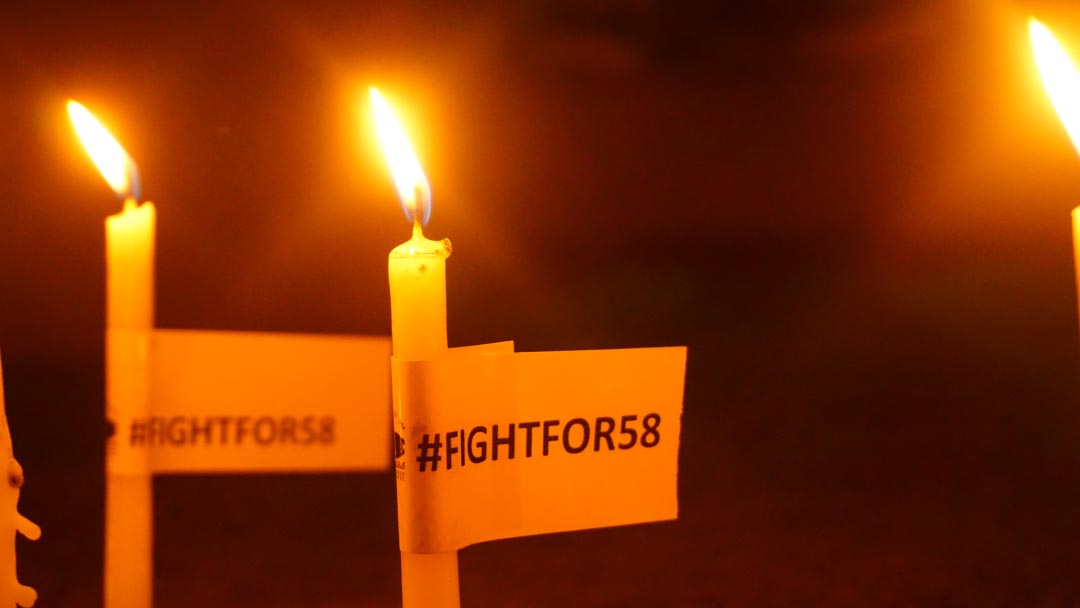“The government and the state remain unbothered by the massacre, considering they were the victims of the agents of state itself.”
By JOHN AARON MARK MACARAEG and ALYSSA MAE CLARIN
Bulatlat.com
MANILA- Nonoy Espina and Jes Aznar could have been dead 10 years ago.
Espina, former director of National Union of Journalists in the Philippines (NUJP) and now its chairperson, and Aznar, then a photojournalist of Agence France Press, were in Maguindanao covering the armed group Moro Islamic Liberation Front (MILF). While in the province, they heard from local reporters that Esmael Mangundadatu would file his certificate of candidacy against Datu Unsay Mayor Andal Ampatuan Jr.
Espina thought it worthy to write a stroy about the two big names in Maguindanao. He and Aznar decided to pursue it. Flu struck him on the very day of filing.
“He couldn’t get up, literally,” Aznar told students of the University of the Philippines College of Mass Communication in a forum last month. They were not able to join the convoy led by Mangudadatu’s wife on Nov. 23, 2009.
When news came about the worst incident of electoral violence and single deadliest attack on the press—the Ampatuan Massacre — Aznar and Espina were shocked. “We could have been there. We escaped death,” Aznar said.
Espina recalled how he had felt his knees weaken at the news, as realization hit him all at once that he had avoided death. Thirty-two of the 58 victims were members of the media like Espina and Aznar.
“It was really a turning point in the history of Philippine media,” Aznar said.
Horrors relived
Aznar, Espina and Rowena Paraan, then NUJP secretary general, were among the first to go to the site of the tragedy.
“As soon as we get there, what greeted our NUJP team was a soldier shouting as he guided the backhoe operator scoop dirt, and as we look closer, along with it were dead bodies,” Espina recalled.
Until now, Espina confessed he could still visually imagine the looping image of the backhoe’s shovel diving then being lifted again.
“At the end of our first day at the scene, there were just 25 bodies excavated. Then they called off the excavation. As we left, I asked myself, ‘Putcha, when will the counting of bodies end?’”
For Paraan,the stench of decaying bodies lingered in her memory.
Under the scorching heat of noon, the NUJP team approached the rolling hills of sitio Malating, barangay Salman, Ampatuan, Maguindanao and stepped on to the unpaved road.
“As we arrived, they were digging out the van of UNTV. It was flattened and despite of it being really hammered with the paint almost all scratched out, you can still make out the ‘tres’,” said Paraan.
As Paraan narrated the horrifying scene she witnessed, the crowd of young journalists listened intently, most of them barely out of elementary when the massacre happened.
Aznar described it as “a frightening scenario.”
He said he was more afraid to what would then become of his profession as a journalist if anyone could just kill a journalist. He couldn’t help but think that he was wearing the same press ID as those who were being dug out —a once powerful tool and protection for mediamen.
Reigning impunity
Remembering it ten years later, itpains Espina that until now, the case is still yet to conclude.
“The government and the state remain unbothered by the massacre, considering they were the victims of the agents of state itself,” Espina told Bulatlat in an online interview.
He added that with the current political climate, one cannot doubt that the culture of impunity continuously reigns, worsening by each killing perpetuated by those in power.
Just this month, the Committee to Protect Journalists (CPJ) released the Global Impunity Index ranking the Philippines fifth as most dangerous country in the world. The Philippines has the highest number of unsolved journalists’ murders in the world, with 41 recorded killings in the past 12 years.
The attacks and harassments continue to persist.
“If justice cannot be found for the worst incident of electoral violence in the country and the single deadliest attack on the press ever recorded, you can be sure the killings will continue without letup,” said Espina.
The post Remembering Ampatuan Massacre and the reigning impunity appeared first on Bulatlat.




